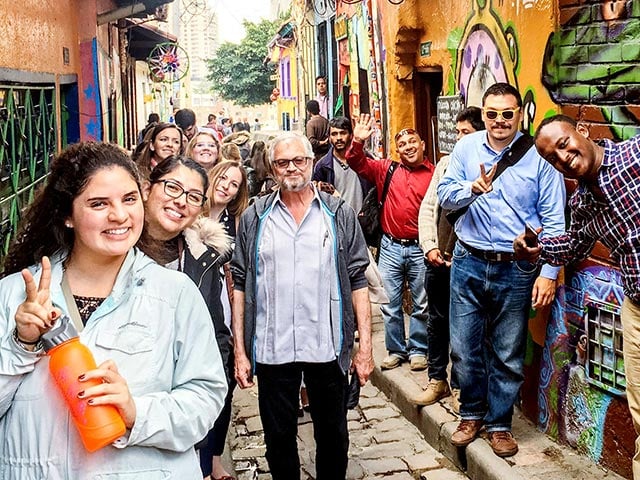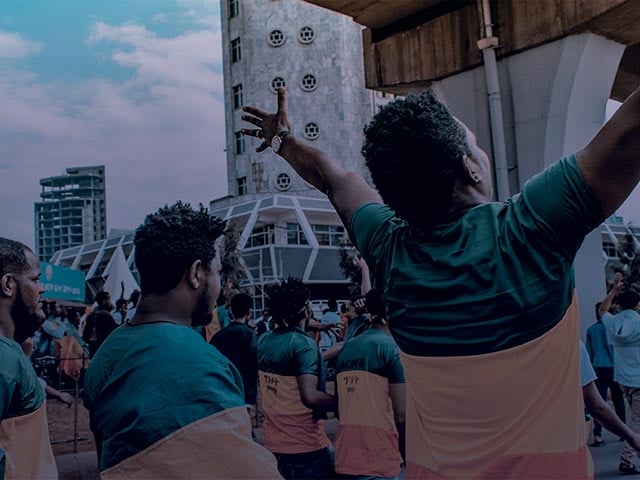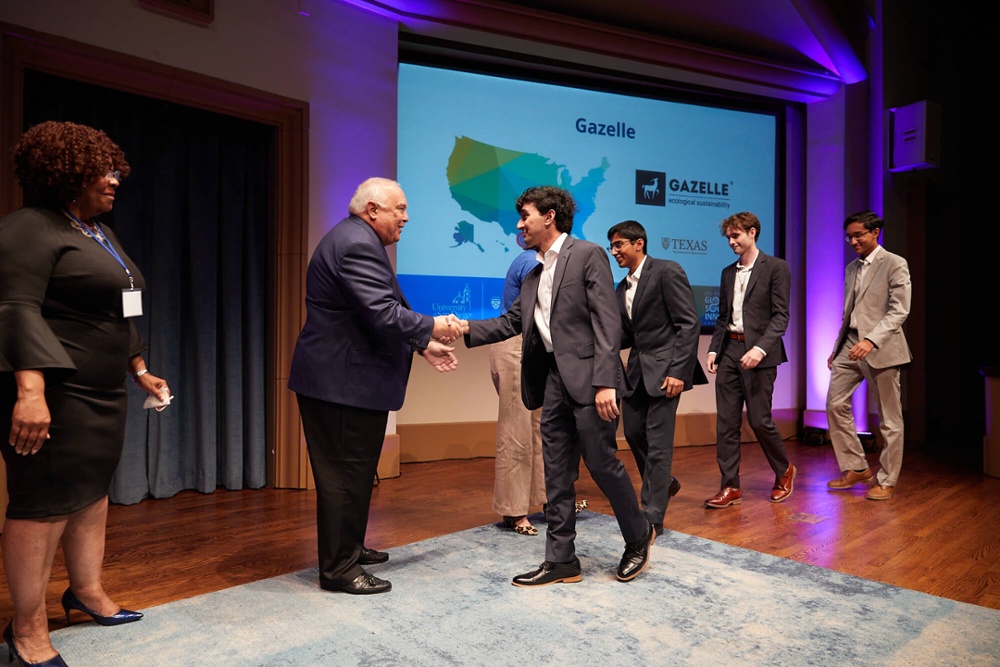Bringing It Home: Lessons from International Youth on Building Peace After Elections
For those of us in the US, we are waking up to our third day of anticipation, as we wait for the official results from Tuesday’s election. In an initial risk assessment for the US released Wednesday evening by Just Security, the publication ranked the US at an ‘increased risk’ for post-election violence, citing President Trump’s myriad of false and misleading claims about the election and ballot counts as one of the main potential stokers of the flame. A lack of condemnation of his claims coming from Republican leaders serves to bolster tensions in many places across the US.
It’s important to look at the arena for youth peacebuilders across the United States from both a micro and a macro level. In particular, practitioners and activists need to be aware of three main points:
- How electoral violence is framed in the international arena;
- The power of young people to be a driving force in peaceful transitions of power; and
- How these efforts should be connected and harnessed in the US, as we await the official results of our election with an explicit aim of preventing violence.
Elections are not the cause of violence, but they can serve as catalyzing events for subtext violence that then boils over. We know that electoral violence is not just physical violence at the polls, it is voter suppression, intimidation, and anything that may prevent individuals from exercising their democratic right to vote. It’s also important to acknowledge that electoral violence doesn’t just happen on Election Day. The potential for violence exists in the lead up to the election, on election day, and in the weeks following the election. We’ve all been casting ballots in the US since as early as September, as we’ve lived in the midst of a global pandemic and increasing tension over police brutality in the US. People have been experiencing political violence throughout this period, and EDay and the coming days are just the boiling point.
There’s a perception among many in the Global North and peacebuilding community that looks at political, mass or electoral violence in a vacuum - it’s something that happens ‘over there’, generally in nations that are considered unstable or fragile, not here in the US. When in fact, we know that people are experiencing violence everywhere.
Today, 9 of 10 instances of lethal violence take place outside of conflict zones in locations broadly considered at peace. Much of this violence takes place in cities where the majority of humanity is projected to reside in the coming decades, and locales that have served as critical organizing centers for both sides during the election process. This means that, during an election cycle as volatile as the US has seen, there is a high likelihood that violence could break out in cities and urban spaces across the US.
Leaders and organizers need to understand the risks, triggers, and accelerants of mass violence and equip themselves with resources to respond rapidly and effectively as advocates of peace. Impact:Peace has been working with the Stanley Center for Peace and Security to provide timely resources, including an analysis of risk factors for mass violence in the United States, a discussion paper recommending specific actions for national policymakers, and a system for connecting individuals and institutions to tools that can help to peacefully manage a period of potential crisis and violence.
Youth are key to finding these solutions because they can provide innovative solutions for more peaceful and alternative ways of protesting and demanding accountability from their governments. As is stated in the Youth, Peace and Security literature, youth populations have long been at the forefront of building peace in their communities -- creating movements, organizations and networks -- to mitigate negative effects of conflict and, at times, take up adult roles of preventing recurring cycles of violence and becoming the primary actors in grassroots community development
While many narratives claim that youth are involved in perpetrating electoral violence, youth movements and leaders are often those most effective at preventing this violence by offering alternative ways of protesting and demanding accountability from the government. We’ve seen this in Nigeria this past year with the massive youth-led movement against the Special Anti-Robbery Squad (SARS), in Lebanon, where young women were at the inception of last year’s October Revolution, and across the US, where young Black and indigenous women have been at the forefront of the movement for Black lives, climate change, and ending violence against their communities.
This has stretched to youth who are under 18, and don’t have the legal right to vote for their elected representatives in the United States. We’ve seen through March for Our Lives how powerful this energy can be, and the ways in which young people are telling their stories and creating change without even having access to the political mechanisms that are so often linked to power.
We also know that youth, and in particular young women, are statistically proven to work better across party and identity lines, and this translates into efforts towards violence reduction, and that they are also capable of organizing completely independently of political guidance, as we have seen youth organizing and mobilizing their peers across the US to ensure that every vote will be counted.
However, there remains a gap in leaders’ abilities to take these lessons and apply them to the US context.
We’ve already seen enormous youth turnout in the US election, with early numbers showing that young people, particularly young Black voters and young people of color, voted overwhelmingly for Biden and Democrats down the ballot, something that needs to not be taken for granted if Biden is declared the winner. Youth are also the pathway forward to better violence reduction strategies, and are already organizing to keep Biden and his team accountable to promises that the campaign made, including on issues such as racial justice, VAW, and climate change.
What’s also important to note is, just because Biden may be president, does not mean that violence throughout the US will stop, it’s not just electoral violence but political violence that spans the spectrum and all across the US. Programs in the US often focus on reducing youth violence, but fewer understand the power of youth themselves to be violence interrupters in their own communities.
Throughout the election period, we’ve seen youth in particular take to online spaces, reaching millions of kids via Instagram, Twitter, and in particular, TikTok. They’re adaptive and have been sharing information about protests, how to register to vote, and how to lobby your local representatives if you’re under 18. This goes to another area where youth are particularly powerful at reducing violence–the online space. Over the past week, I've seen many youth sharing information around de-escalation and safe protesting tips. They’re being considerate about the energy they’re bringing to online spaces, because they know the power they have.
When international bodies do analyses of risk around elections in countries around the world, this always includes an actor and context mapping exercise. Observers map existing relationships and power dynamics that could tip a place from tensions to outright violence, and analyze how actions taken by powerful individuals can tip the scale one way or another.
In Just Security’s risk assessment from Wednesday night, they stated that “political leader responses [to claims by Trump and his allies] are likely to have the greatest influence over many of the other actors and factors that follow, including how the public, media, and foreign actors respond.”
This follows what many of us know–in a time of crisis and heightened tensions, it is incredibly important for political and community leaders to call for calm and solidarity in attempts to defuse potentially violent situations. But what are we faced with when, as is so often the case in the US and across the world, those in power are so far removed from what the majority of the youth and young people are calling for? It’s really vital that we stop and think about the voices of youth who are carrying justice movements in the US, and how we can make a concerted, conscious effort to ensure that their voices are integrated into formal decision-making processes. Youth in a community are naturally best placed to figure out ways to reduce and mitigate violence in their own neighborhoods and circles. How can we ensure that, in this period of extreme importance, the voices of youth are included in responses to potential violence?
Interested in learning more about the work being done by Impact:Peace and the Kroc IPJ? Check out their website here.

About the Author
The Joan B. Kroc School of Peace Studies (Kroc School) at the University of San Diego is the global hub for peacebuilding and social innovation. Founded in 2007, the Kroc School equips the next generation of innovative changemakers to shape more peaceful and just societies. We offer master's degrees in peace and justice, social innovation, humanitarian action, conflict management and resolution, and a dual degree in peace and law — programs that have attracted diverse and dynamic students from more than 50 countries. In addition to our graduate programs, the Kroc School is home to the Kroc Institute for Peace and Justice (Kroc IPJ). Founded in 2001, the Institute supports positive change beyond the classroom. Through groundbreaking research, experiential learning, and forward-thinking programs, the Kroc School and Kroc IPJ are shaping a future in which peaceful co-existence is the new normal.





